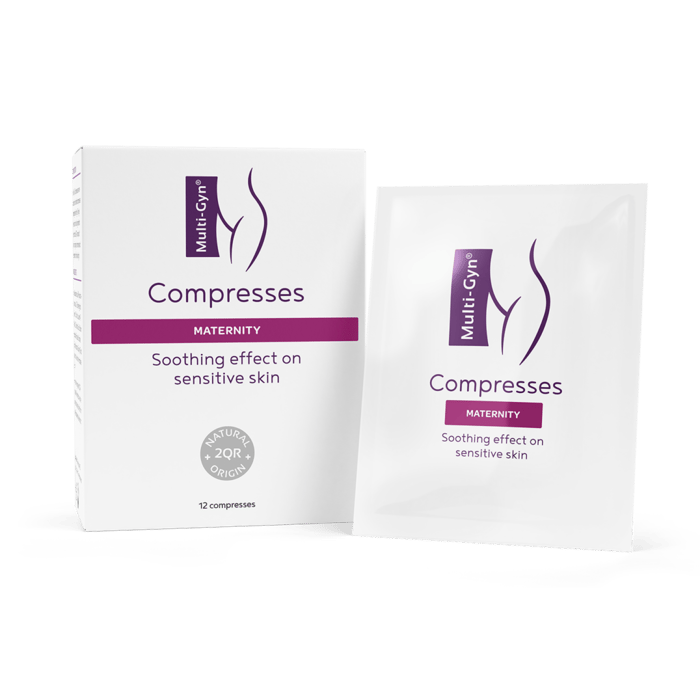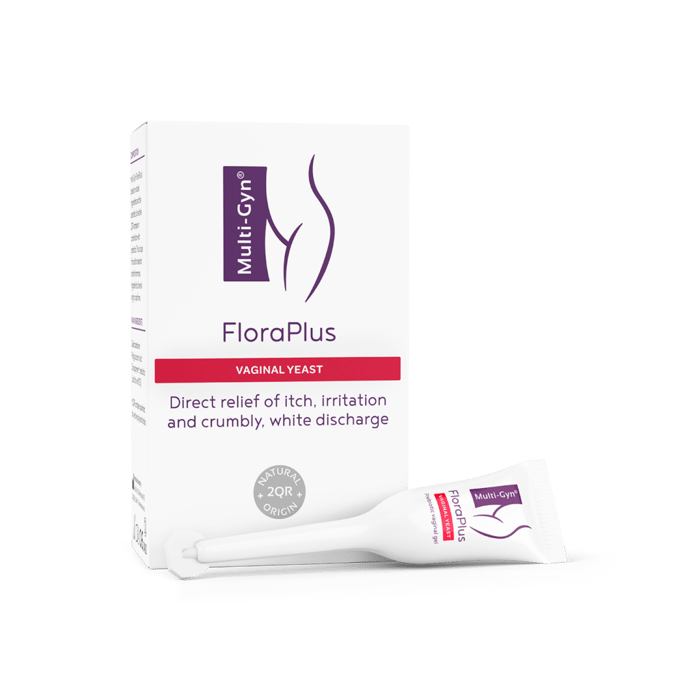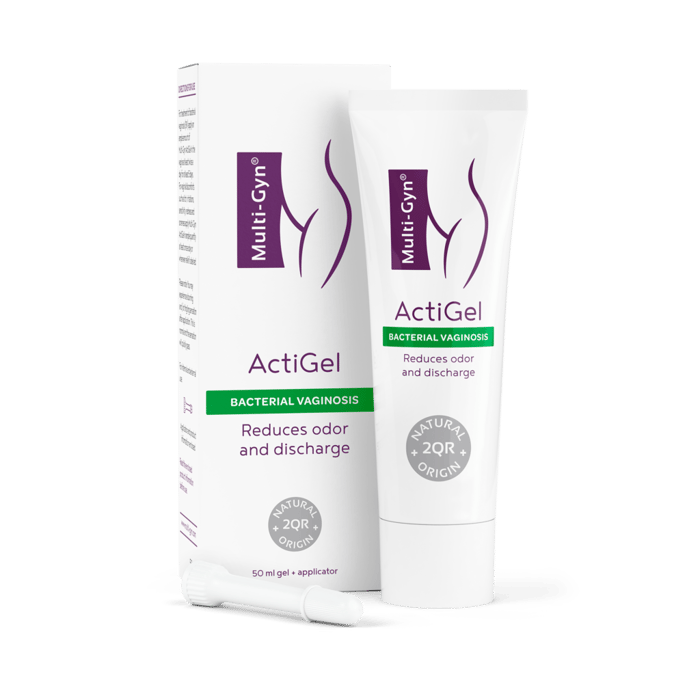Vaginal Yeast Infection
Worried you may have a vaginal yeast infection?
A vaginal yeast infection can be itchy, uncomfortable, and, in some cases, even painful. As many as 3 in 4 women at some point in their lives will experience this.
If you are prone to yeast infections or think you may have a yeast infection, you will be pleased to hear that this vaginal irritation can be easily treated.
Read on to discover
- What is a yeast infection?
- The most common vaginal yeast infection symptoms
- Common vaginal yeast infection causes
- How to diagnose a vaginal yeast infection
- How to treat vaginal yeast infections
- Home remedies for a vaginal yeast infection
- How to prevent vaginal yeast infections
- Vaginal yeast infections FAQs
What is a yeast infection?
A vaginal yeast infection is a type of vaginal infection that is caused by an overgrowth of a fungus known as candida.
A healthy vagina contains both bacteria (good and bad) and yeast. However, when the delicate balance of your vagina is disrupted, candida can grow out of control and cause a yeast infection.
As well as a vaginal yeast infection, yeast infections can also affect your mouth, causing white patches and sometimes irritation.
Men can also be affected by penile yeast infections, although this is less common, and they can experience symptoms on their penis, such as redness, itching, and irritation.
What are the most common vaginal yeast infection symptoms?
A yeast infection is easy to recognise once you know its symptoms which include:
- Redness and swelling of the vulva or vagina
- Pain or burning during urination
- Discomfort during sex
- A thick, white and clumpy discharge that resembles cottage cheese
- A yeasty smelling discharge
As well as a yeast infection discharge, some women also experience lower back pain or lower pelvic pain.
If you are not sure whether you have a yeast infection or not, it can be a good idea to book an appointment with your GP. This can ensure you rule out any other infections, such as sexually transmitted diseases that require antibiotics to treat.

What are the most common vaginal yeast infection causes?
As mentioned earlier, yeast infections inside the vagina are incredibly common, and some women are simply more susceptible than others.
That being said, there are certain factors that make you more at risk of getting a yeast infection. These include:
Hormonal changes
Even the slightest change in your hormone levels can disrupt the delicate pH balance of your vagina and lead to a yeast infection. Major changes such as pregnancy, menopause, and breastfeeding can all put you more at risk of getting a yeast infection.
If you take contraceptive pills or have recently changed your method of birth control to an oestrogen pill, you are also more likely to develop a yeast infection.
Antibiotics
If you are taking antibiotics to treat an infection or illness, you leave your body open to getting a yeast infection from antibiotics. This is because antibiotics kill the bad bacteria in your body but also the good bacteria, which are responsible for preventing the overgrowth of candida.
Diabetes
Women with diabetes, especially uncontrolled diabetes, are more prone to yeast infections. This is due to an increase in sugar in your body and your vagina, which creates the perfect environment for yeast to grow.
Weakened immune system
Having a weakened immune system puts you more at risk of many illnesses and ailments, including vaginal yeast infections. If you are HIV positive or have another immune disorder, you might want to take proactive steps to reduce your risk of yeast infections.
Sexual intercourse
Although a vaginal yeast infection is not a sexually transmitted disease, it can be passed from one person to another during sexual contact. To avoid this, use a barrier method such as a condom when having sex and make sure that both you and your partner receive treatment if you get a yeast infection.
Scented bath and washing products
If you experience recurring yeast infections, this may be because you are using a certain bath or washing product that is disrupting the balance in your vagina. Scented bath products and laundry products can both cause a vaginal yeast infection, especially if you are sensitive to them.

How to diagnose vaginal yeast infections
If you have never had a yeast infection before, it is advisable to make an appointment with your GP to rule out any other vaginal infections such as bacterial vaginosis or a sexually transmitted infection.
If you do not feel comfortable seeing your doctor about this, you can buy vaginal yeast infection test kits online and at most pharmacies or drug stores. These are easy to use and will tell you if you have a yeast infection straight away and without the need to see a medical professional.
For women that have had a yeast infection before and recognise the symptoms, you do not need to see your GP. Instead, use an over-the-counter vaginal yeast infection treatment such as Multi-Gyn FloraPlus, Gyno-Pevaryl or another anti-fungal medication.
During an appointment with your GP to diagnose a vaginal yeast infection, you can expect:
- A brief discussion about your medical history
- A pelvic exam which includes an examination of your vaginal walls and cervix
- A swab test may be required if your doctor is unsure of whether you have a yeast infection or another vaginal infection
If you have not had a vaginal swab test before, you do not need to worry about this. Vaginal swab tests are not painful, although some women do find them uncomfortable.
How to treat vaginal yeast infections
Although vaginal yeast infections are not serious, that doesn’t make them any less unpleasant. Therefore, when it comes to how to treat a vaginal yeast infection, you want to find a treatment that works quickly and effectively.
There are many over-the-counter vaginal yeast infection treatments available, so which one should you use?
Multi-Gyn FloraPlus
Multi-Gyn FloraPlus is an over-the-counter vaginal yeast infection treatment that is highly effective in soothing the symptoms associated with thrush.
Multi-Gyn FloraPlus is not an anit-mycotic, but is based on prebiotics and 2QR-complex. Prebiotics serve as nutrients for the beneficial bacteria (lactobacilli) and 2QR-complex derives from aloe vera gel. Unlike other anti-fungal medications, Multi-Gyn Flora Plus works by supporting the growth of good bacteria (lactobacilli) and in this way growth of candida is suppressed.
Supplied in an easy-to-use tube, insert it directly into your vagina before bed.
This product also contains prebiotics which serve as nutrients for the good bacteria in keeping your vagina flora in optimal condition. In addition, it contains no fragrances which offers a more natural way to relief vaginal yeast symptoms.
How to treat a severe or complicated vaginal yeast infection
The most common signs of a severe vaginal yeast infection include:
- Severe redness, swelling, and itching
- Sores or tears in your vaginal tissue from scratching
If you have had more than four yeast infections in a year or have a severe vaginal yeast infection, then your GP is likely to prescribe several doses of one of the above anti-fungal medications or a long-term prescription of fluconazole that you must take over the course of 6 weeks.
If you keep getting recurrent vaginal yeast infections, it is possible that your partner is also infected and that you are passing the infection back and forth to one another. To avoid this, make sure that you treat both yourself and your partner and that you abstain from sexual activity until all your symptoms have gone.
How long does it take for a vaginal yeast infection to go away?
Once you start treatment for a vaginal yeast infection, you should notice an improvement in your symptoms in as little as 1-2 days. However, it can take up to 1 week for the infection to clear and for all your symptoms to go away.
If you have a severe yeast infection, it may take longer than this.
Always make sure that you complete your chosen course of treatment, even if you start to feel better before this time.
Can a vaginal yeast infection go away on its own?
Once you start treatment for a vaginal yeast infection, you should notice an improvement in your symptoms in as little as 1-2 days. However, it can take up to 1 week for the infection to clear and for all your symptoms to go away.
In some women, mild cases of a vaginal yeast infection will go away on their own. However, most women with vaginal thrush require an over-the-counter treatment such as an anti-fungal tablet, pessary, or cream.
If you have severe symptoms of vaginal yeast infection or you have had more than four vaginal yeast infections in one year, you should book an appointment with your GP to ensure that you do not have another type of vaginal infection, such as an STD. Your doctor will advise you on the best severe vaginal yeast infection treatment.

Home remedies for a vaginal yeast infection
If you prefer to treat a vaginal yeast infection naturally, there are several home remedies.
However, it is worth noting that these are not medically approved treatments for vaginal thrush, and their effect are not proven.
Coconut oil
Coconut oil has anti-fungal properties, which can make it a natural remedy for yeast infections.
Natural yoghurt
Natural yoghurt can soothe the symptoms associated with a vaginal yeast infection, such as vaginal itching, vaginal swelling, and vaginal redness.
Tea tree oil
Tea tree oil has anti-fungal properties that can help treat a yeast infection.
Boric acid suppositories
Vaginal boric acid suppositories are used by women with recurrent vaginal yeast infections.
Probiotic supplements
For the prevention and treatment of vaginal yeast infections, a daily probiotic supplement can help ensure the correct balance of bacteria in your vagina and stop any overgrowth of candida.
Multi-Gyn Flora Plus vaginal yeast infection treatment contains probiotics and can be used to treat vaginal yeast infections and as a maintenance treatment to keep vaginal irritations at bay.
How to prevent vaginal yeast infection?
As the saying goes, “prevention is better than cure”, and there are several steps that you can take to reduce your risk of getting a yeast infection. These include:
- Eat a well-balanced diet that includes limited processed foods and sugars
- Take a daily probiotic supplement
- Wear breathable, cotton underwear
- Avoid tight-fitting clothes
- Change your tampons or pads frequently
- Avoid scented feminine hygiene products
- Do not take hot baths or go in hot tubs
Vaginal yeast infection FAQs
What does a vaginal yeast infection look like?
The most common vaginal yeast infection symptoms are redness, swelling, and a white, thick and clumpy discharge that resembles cottage cheese. In some women, a watery discharge yeast infection occurs.
You can find vaginal yeast infection pictures online, which can give you a better idea of what a vaginal yeast infection looks like.
How do you get a vaginal yeast infection?
A vaginal yeast infection is caused by an overgrowth of fungus known as candida in your vagina. Although any woman can develop a vaginal yeast infection, certain factors such as taking antibiotics, being diabetic, and using scented soaps can put you more at risk.
Vaginal yeast infections are not sexually transmitted infections, but they can be passed from one person to another via sexual contact.
Is a vaginal yeast infection contagious?
You can catch a yeast infection from a man and vice versa, although this is uncommon. If you have been diagnosed with a vaginal yeast infection, it is recommended to refrain from sex until your infection has cleared up.
Does my partner need yeast infection treatment if I have a vaginal yeast infection?
If you have a vaginal yeast infection, it is possible that your partner will get a yeast infection, too, even if they are male. It is uncommon for men to experience penile yeast infections, but it is possible. Some of the most common symptoms of a penile yeast infection include redness on the head of the penis, discharge under the foreskin, and itching.
If your partner has any of the above symptoms, they should also seek treatment for a yeast infection. Men can use anti-fungal creams and take anti-fungal tablets to treat penile yeast infections.If your partner does not have any symptoms, it is still a good idea to abstain from sexual intercourse until your vaginal yeast infection has completely cleared up.
How can I treat a yeast infection naturally at home?
You can treat a yeast infection at home using natural remedies such as Greek yoghurt, boric acid suppositories, coconut oil, and garlic supplements. However, none of these are medically approved treatments for a vaginal yeast infection, so it is recommended that you use an approved over-the-counter treatment or seek the advice of your doctor.
What is your quickest solution to getting rid of a yeast infection?
If you want to get rid of a vaginal yeast infection fast, you need to take an approved anti-fungal treatment. These can be taken orally or applied as a pessary directly into the vagina.
To treat the symptoms an over-the-counter such as Multi-Gyn FloraPlus can soothe the symptoms of yeast infections.
What is the main cause of a yeast infection?
The main cause of a yeast infection is an overgrowth of fungus known as candida in the vagina. This can occur due to many factors such as hormonal changes in the body, antibiotic use, or having uncontrolled diabetes. Frequent vaginal douching and the use of scented bath products can also cause vaginal yeast infections.
How long does it take to flush out a yeast infection?
Treating a yeast infection typically takes around 7 days, although this depends on how severe your infection is. If you have a mild case of vaginal thrush, you can wait and see if they go away on their own. However, if your symptoms are causing you discomfort, you should seek out an over-the-counter treatment such as Multi-Gyn FloraPlus.
Links & Sources
- https://www.mayoclinic.org/diseases-conditions/yeast-infection/symptoms-causes/syc-20378999
- https://www.nhs.uk/common-health-questions/sexual-health/can-a-man-catch-thrush-from-a-female-partner/
- https://www.ncbi.nlm.nih.gov/pmc/articles/PMC2567125/
- https://patient.info/sexual-health/vaginal-discharge-female-discharge/treating-recurring-thrush
- https://www.nhs.uk/medicines/clotrimazole-for-thrush/
- https://www.nhs.uk/pregnancy/related-conditions/common-symptoms/thrush/






